Eric E. Wright's Blog, page 46
December 7, 2011
Terri Blackstock's When Dreams Cross
 When Dreams Cross by Terri Blackstock
When Dreams Cross by Terri BlackstockMy rating: 2 of 5 stars
I found this book annoying. You might ask why, as a man, I read it. Good question. One reason was that I'm finishing a romantic suspense novel written from the female perspective, so I though I could learn a thing or two from an expert.
For another reason, the book was passed on by a relative at a time when I was looking for an entertaining, morally uplifting, easy reading book. It was easy reading. It was entertaining to a degree. But on the other hand--very frustrating.
There were two characters, one a woman trying to fulfill her father's dream of a Christian theme park and a man whose gifted animations could really add to the park. They were Christians who met eight years after a disastrous broken engagement. And whenever they met sparks flew.
The book was full of god-talk but little depth and subtlety. The book was one big argument between the two, filled with misunderstandings and rancor. Now I realize that Christians aren't perfect. I ought to know. But the immaturity of these two was astounding. In their relationships they acted as if they hadn't learned the most basic things about the Christian faith: humility, patience, kindness, forgiveness. In a word the characters were cardboard cutouts with lots of passion but no depth.
After reading it, I shake my head at the thought of the millions and millions of copies of romance like this sold every year.
View all my reviews
December 5, 2011
The Cat's Table, Michael Ondaatje
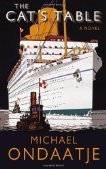 The Cat's Table by Michael Ondaatje
The Cat's Table by Michael OndaatjeMy rating: 4 of 5 stars
Michael Ondaatje, The Cat’s Table. From the point of view of an 11 year old boy now grown up looking back on the 21 day voyage of the Oransay from Ceylon to England. The narrator is assigned to the Cat’s Table, the insignificant table most distant from the Captain’s Table. In it he goes go back to tell of the escapades of the narrator and 2 other boys, Cassius and Ramakhin as they stalk the ship almost unseen and ignored by all the adult crew and passengers. They have wild adventures in the bowels of the ship, in its lifeboats, in the first class pool, and on various decks.
In a sense it is a Tom Sawyer adventure on a ship but with much of the earlier life and later lives of the characters intertwined in the story.
In the course of their adventures the trio discover many secrets about passengers, secrets and peculiarities of said characters told in the short chapters. There is the narrator’s beautiful cousin who is supposed to be his chaperone, an eccentric man tending a garden of plants in the bowels of the ship, a thief who recruits the narrator to sneak through the transom in order to open doors, a teacher surrounded by books who never leaves his cabin, the shadowy Miss Lasqueti whose mystery is not revealed until the end of the book, a shackled prisoner who is brought out late at night to get air, a girl who jogs around the deck early in the morning, and many more.
It is well written and entertaining, deceptively simple. Still I wonder why it rated the author a place on the Giller list of nominees. 4 of 5
View all my reviews
November 28, 2011
The Mighty St. Lawrence River
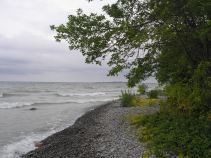 A couple of years ago we stopped for a picnic at one of the Seaway parks on the St. Lawrence River in Ontario. The St. Lawrence inspires awe, draining as it does almost a quarter of the North American continent. It's hard to comprehend that the current rippling by us that day contained rain that fell on distant Manitoba or Minnesota; water that had thundered over Niagara's cataract.
A couple of years ago we stopped for a picnic at one of the Seaway parks on the St. Lawrence River in Ontario. The St. Lawrence inspires awe, draining as it does almost a quarter of the North American continent. It's hard to comprehend that the current rippling by us that day contained rain that fell on distant Manitoba or Minnesota; water that had thundered over Niagara's cataract.
Scripture speaks of even greater rivers, the rivers of God. The river that went out of Eden to water the garden.(Gen 2:10) The river of pleasures that God gives his children to drink, a river that abundantly satisfies their thirst.(Psalm 36:8) The river that makes glad the city of God.(Psalm 46:4) The pure river that flows from the throne of God and the Lamb along the banks of which grow trees whose leaves are for the healing for the nations.(Rev. 22:1) God's rivers are inexhaustible, pure, enlivening, enriching—and very mysterious.
The Great Lakes and the St. Lawrence Seaway System comprise one of the world's greatest transportation networks. Between the Atlantic Ocean and Duluth, Minnesota, ships traverse a distance of 3700 kilometres. The system serves a region that is home to more than 90 million people, where a third of the continent's gross national product is produced. The Great Lakes' watershed accounts for forty per cent of US manufacturing and two-thirds of Canada's industrial output.
God's river system is far mightier. Through the instrumentality of the Holy Spirit, his river dispenses grace and mercy to billions world-wide. Under a different image, but one that teaches the same lesson, we read that, "He causes his sun to rise on the evil and the good, and sends rain on the righteous and the unrighteous.(Matt. 5:45)
Love, God's love, makes the world go round. The Lover on High moves men and women to embrace each other in relationships of committed love. The heavenly Father blesses couples with children. And Jesus, who loves ch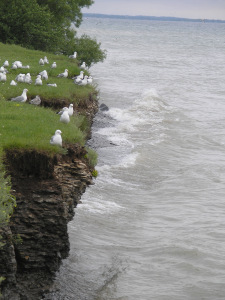 ildren, encourages them to laugh and play. The Almighty causes flowers to bloom and tomatoes to ripen. He plants in hearts an appreciation for beauty and a longing for peace. He inspires acts of compassion and courage.
ildren, encourages them to laugh and play. The Almighty causes flowers to bloom and tomatoes to ripen. He plants in hearts an appreciation for beauty and a longing for peace. He inspires acts of compassion and courage.
Like the mighty St. Lawrence, the world-wide flow of God's love and mercy doesn't depend on us. We don't deserve it. We can't earn it. We can't stop its flow. It just is—a universal fact of life on this planet. We can reject God's love. We can distort it. We can corrupt it. We can degrade it. We can deny it. But we can't stop it from flowing around us—on and on and on—like the great rivers of earth.
Wherever it flows, God's love exposes anti-love and promises deliverance from its pernicious power. In the gospel of Jesus Christ, divine love's most astounding expression, the waters of God's grace wash away our sins. Let those waters wash over us! [Adapted from Down A Country Road. See http://www.countrywindow.ca ]








November 12, 2011
Falling Leaves – Failing Health
Leaves have been slowly falling for the last week or so. They litter our lawn and  beckon me to limber up the rake. Living in the country, I'm wont to let the wind do the raking for me, but this year I may gather some to enrich our compost heaps. That is, if I can get some relief from this arthritic knee which has me hobbling around the house.
beckon me to limber up the rake. Living in the country, I'm wont to let the wind do the raking for me, but this year I may gather some to enrich our compost heaps. That is, if I can get some relief from this arthritic knee which has me hobbling around the house.
With the falling leaves came falling temperatures. Although warm days continued into November, inevitably frost shriveled the flowers and killed the pepper plants. The garden cries out for me to abandon my seat at the computer and tidy up for the approaching winter. But I don't quite feel like it.
Ah, yes, that nasty word, winter. Half the population laments the approach of shorter days, snowstorms, windshields encased in frost, and sky-high heating bills. The other half, well perhaps less than half, eagerly waxes their skiis, sharpens their skates, gets out their winter coats and plans a winter getaway to snow country.
Whatever one's proclivity, it is pointless to complain about winter's arrival. The passing of the seasons is unavoidable. We'd best face the facts with a cheerful countenance.
There is a season for everything. And, unlike the return of spring, we will not discover a fountain of youth for our aging bodies. No matter how many anti-winkle creams or pills we pop or operations we endure, age will gradually—or quickly—take its toll. Forgive me gentle reader for broaching a subject that is almost taboo. But it seems to me that like winter, we need to accept the inevitable—and prepare for it. Okay, I admit it, I haven't yet given in to Mary Helen's urging t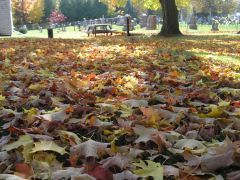 hat we purchase a cemetery plot.
hat we purchase a cemetery plot.
It will do me no good to nostalgically long for earlier years when I could run and jump and climb without hindrance. When the roof needs shingling again, I don't think I'll do it myself. No, it's time to stare reality in the face—or in the mirror. My hair is thinning, my heart is weakening, and my legs are giving out. Last weekend I had to stop the repairs I was doing on my woodland bridge and take a breather.
None of this means that we are doomed to gloom. As the years accumulate, we can focus more on becoming godly, and less on feats of athletic skill. We can allow our circumstances to generate more empathy and compassion for others. We can read good books and write letters and send emails and use the phone to encourage people. We can talk to God more, intercede more, and study more about our future hope. Heaven is ahead. Christ will return. The kingdom will come. There will be no more pain and no more tears. What's not to like about that! [For books by this author see: http://www.countrywindow.ca]








November 10, 2011
In The Beginning Was Information
I’ve been slow about putting up a review of this book because I have read it in chapter snatches over a period of months. It is complicated. I can’t say I understand much of the theory, but I do understand and agree wholeheartedly with the thesis that there is no natural law or process or phenomenon through which matter can give rise to information. And without encoded information, there can be no life.
Gitt begins his book by asking how certain spiders are so specific in the web they weave, how a certain S. American butterfly’s wing can be such an amazing structure, and how human embryos can so purposefully develop. The answer is, information is encoded in the cells. An organ playing robot, although quite astonishing, can only plan what it is programmed to play. Information is crucial.
Gitt next discusses the differences between laws of nature, models, theories, hypotheses, paradigms, speculation, and fiction. He points out that inherent resistance to change results in many hypotheses and paradigms being accepted as laws long after they have been disproved. A law of nature, by contrast, is a statement verified repeatedly and in a reproducible so that it is viewed as valid. Laws of nature are based on experience, are universally valid, equally valid for living and inanimate things, are not restricted to any one field of study, are immutable. Laws of nature explain events without God since they became operational when creation was completed. For example, gravity, the law of conservation of energy, etc.
Many scientists justly regard information as the third fundamental entity alongside matter and energy. Gitt then tackles the key question of whether or not information can arise purely from matter. He lists a series of theorems, the first of which is that information is non-material, it cannot be explained in terms of material processes. The second theorem states that information arises through an intentional, volitional act. This adds a 4th entity to matter, energy and information, that of WILL or VOLITION.
He asserts, and then goes on to prove, that information comprises the nonmaterial foundation for all technological systems and for all works of art.
Next Gitt, shows that information, as transmitted from a sender to a recipient, exists on 5 levels: the level of statistics (numbers, letters, words), the level of syntax (how letters, etc. are combined--a multitude of codes [binary code, Greek alphabet, etc], the level of semantics (meaning), the level of pragmatics [eg. actions], and the level of apobetics [the premeditated purpose of the sender]. For example, a male bird calls a mater by means of his song or to establish his territory or a computer program is written for the purpose of solving equations or manipulating a system.
Gitt lists a whole series of theorems to elucidate information. For example, Theorem 23 states that there is no known natural law through which matter can give rise to information, nor is there any physical or material phenomenon that can do this. As formulated by Louis Pasteur, “Life can only come from life,” is has never been contradicted. Information is not life, but information is a necessary prerequisite for life.
Gitt continues for a hundred pages to systematically develop these laws about information and the necessity of codes to pass it on. Let me list a few salient points:
• there can be no information without a code
• Any code is the result of a free and deliberate convention
• there can be no information without a sender....a mental source...volition (will)
• information cannot originate in statistical processes
• Any model for the origin of life (and of information) based soley on physical or chemical processes is inherently false. (p. 98)
In the evolutionary view, due to philosophical bias, both information and life itself is regarded as a purely material phenomena. But the code systems used for communication in the animal kingdom have not been ‘invented’ by them but were created fully functioning.
Gitt uses abundant examples, charts, diagrams, quotations to underline what he is saying. In the end the point is, without God as creator there could be no life. He is the source of all the information contained in code form in all living things.
In almost 80 pages of appendices, Gitt discusses, the statistical view of information, the complexity and variety of languages, energy as a fundamental quantity, and more. 5 of 5 for content; 4 of 5 for readability.

In The Beginning Was Information
I’ve been slow about putting up a review of this book because I have read it in chapter snatches over a period of months. It is complicated. I can’t say I understand much of the theory, but I do understand and agree wholeheartedly with the thesis that there is no natural law or process or phenomenon through which matter can give rise to information. And without encoded information, there can be no life.
Gitt begins his book by asking how certain spiders are so specific in the web they weave, how a certain S. American butterfly’s wing can be such an amazing structure, and how human embryos can so purposefully develop. The answer is, information is encoded in the cells. An organ playing robot, although quite astonishing, can only plan what it is programmed to play. Information is crucial.
Gitt next discusses the differences between laws of nature, models, theories, hypotheses, paradigms, speculation, and fiction. He points out that inherent resistance to change results in many hypotheses and paradigms being accepted as laws long after they have been disproved. A law of nature, by contrast, is a statement verified repeatedly and in a reproducible so that it is viewed as valid. Laws of nature are based on experience, are universally valid, equally valid for living and inanimate things, are not restricted to any one field of study, are immutable. Laws of nature explain events without God since they became operational when creation was completed. For example, gravity, the law of conservation of energy, etc.
Many scientists justly regard information as the third fundamental entity alongside matter and energy. Gitt then tackles the key question of whether or not information can arise purely from matter. He lists a series of theorems, the first of which is that information is non-material, it cannot be explained in terms of material processes. The second theorem states that information arises through an intentional, volitional act. This adds a 4th entity to matter, energy and information, that of WILL or VOLITION.
He asserts, and then goes on to prove, that information comprises the nonmaterial foundation for all technological systems and for all works of art.
Next Gitt, shows that information, as transmitted from a sender to a recipient, exists on 5 levels: the level of statistics (numbers, letters, words), the level of syntax (how letters, etc. are combined--a multitude of codes [binary code, Greek alphabet, etc], the level of semantics (meaning), the level of pragmatics [eg. actions], and the level of apobetics [the premeditated purpose of the sender]. For example, a male bird calls a mater by means of his song or to establish his territory or a computer program is written for the purpose of solving equations or manipulating a system.
Gitt lists a whole series of theorems to elucidate information. For example, Theorem 23 states that there is no known natural law through which matter can give rise to information, nor is there any physical or material phenomenon that can do this. As formulated by Louis Pasteur, “Life can only come from life,” is has never been contradicted. Information is not life, but information is a necessary prerequisite for life.
Gitt continues for a hundred pages to systematically develop these laws about information and the necessity of codes to pass it on. Let me list a few salient points:
• there can be no information without a code
• Any code is the result of a free and deliberate convention
• there can be no information without a sender....a mental source...volition (will)
• information cannot originate in statistical processes
• Any model for the origin of life (and of information) based soley on physical or chemical processes is inherently false. (p. 98)
In the evolutionary view, due to philosophical bias, both information and life itself is regarded as a purely material phenomena. But the code systems used for communication in the animal kingdom have not been ‘invented’ by them but were created fully functioning.
Gitt uses abundant examples, charts, diagrams, quotations to underline what he is saying. In the end the point is, without God as creator there could be no life. He is the source of all the information contained in code form in all living things.
In almost 80 pages of appendices, Gitt discusses, the statistical view of information, the complexity and variety of languages, energy as a fundamental quantity, and more. 5 of 5 for content; 4 of 5 for readability.

November 3, 2011
DNA and the Beanstalk
 While recently cleaning up the vegetable patch for winter, I dismantled the lattice work I'd installed for the climbing beans. That was not easy. The beans stalks grew round and round the poles and each other, then onto anything nearby including the tomatoes. The plants had kept us in fresh green beans almost until first frost. They grew so dramatically high that if I had been able to install a two or three story lattice work they would have climbed to the top. As it was, I had to use a step ladder to pick the topmost.
While recently cleaning up the vegetable patch for winter, I dismantled the lattice work I'd installed for the climbing beans. That was not easy. The beans stalks grew round and round the poles and each other, then onto anything nearby including the tomatoes. The plants had kept us in fresh green beans almost until first frost. They grew so dramatically high that if I had been able to install a two or three story lattice work they would have climbed to the top. As it was, I had to use a step ladder to pick the topmost.
And all this growth from a few little bean seeds. How did those seeds know to climb when my bush beans didn't? How did they know they weren't soy beans? How could they climb so high? My climbing beans reminded me of the magic beans described in the story of Jack and the beanstalk. I can see why the imagination of the writer went wild.
The information packed into the DNA of those seeds is incredible. How does God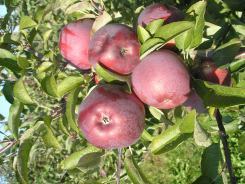 do these kind of things? A bean stalk ten or twenty feet long. An apple tree from an apple seed. And what about a giant sequoia? Moving from plants we could ask the same questions about a whale or a butterfly. As Werner Gitt points out in his book, In the beginning was information, there is no known natural law or process or phenomenon through which matter can give rise to information. And without encoded information there can be no life.
do these kind of things? A bean stalk ten or twenty feet long. An apple tree from an apple seed. And what about a giant sequoia? Moving from plants we could ask the same questions about a whale or a butterfly. As Werner Gitt points out in his book, In the beginning was information, there is no known natural law or process or phenomenon through which matter can give rise to information. And without encoded information there can be no life.
 I've been writing about a bean seed, but what about the information stored in human DNA? We are told that every kind of life and every organ of every living thing uses specific proteins. In our bodies there are about 50,000 different proteins. Wow! The result of billions of years of chemical accidents? A product of evolution? Sorry, I'm just not that credulous. I'd rather go with David and praise our Creator God because I am fearfully and wonderfully made. Your works are wonderful, I know that full well. (Psalm 139:14) Do we know that? Do we know Him? [To purchase copies of, Down a Country Road or Through a Country Window see: http://www.countrywindow.ca]
I've been writing about a bean seed, but what about the information stored in human DNA? We are told that every kind of life and every organ of every living thing uses specific proteins. In our bodies there are about 50,000 different proteins. Wow! The result of billions of years of chemical accidents? A product of evolution? Sorry, I'm just not that credulous. I'd rather go with David and praise our Creator God because I am fearfully and wonderfully made. Your works are wonderful, I know that full well. (Psalm 139:14) Do we know that? Do we know Him? [To purchase copies of, Down a Country Road or Through a Country Window see: http://www.countrywindow.ca]








October 27, 2011
Thanks for Migrant Workers!
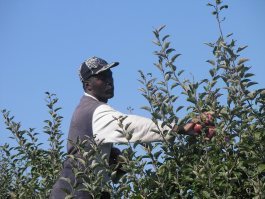 Many of the pickers in an apple orchard I recently visited were migrant workers from the Caribbean. A local strawberry grower routinely brings in help from Mexico. The same happens in market gardens, vineyards, and farms throughout Canada and the US. Our harvests depend on the help from beyond our borders.
Many of the pickers in an apple orchard I recently visited were migrant workers from the Caribbean. A local strawberry grower routinely brings in help from Mexico. The same happens in market gardens, vineyards, and farms throughout Canada and the US. Our harvests depend on the help from beyond our borders.
Agricultural work tends to be hard, tedious, and even dangerous. Laborers work long hours for relatively modest pay. Fortunately for the rest of us, migrant workers pitch in to do work many of us are unwilling to attempt. As a result, our lifestyles are enriched. So I was gratified this year to see that, in recognition of their contribution to our local community, our church held a special dinner honoring migrant workers.
 But I was surprised to read that Alabama has enacted very strict anti-migrant legislation. As a result, Alabama "farmers are staring at crops that no native-born American wants to pick. Most of their Hispanic workers have fled…'You can't get legal workers,' a blueberry farmer named Connie Horner told the Associated Press."
But I was surprised to read that Alabama has enacted very strict anti-migrant legislation. As a result, Alabama "farmers are staring at crops that no native-born American wants to pick. Most of their Hispanic workers have fled…'You can't get legal workers,' a blueberry farmer named Connie Horner told the Associated Press."
In spite of high unemployment, there always seems to be a shortage of farm workers. The same can be said about workers in the Kingdom of God. Particularly now, and especially in North America, volunteers for full-time missionary service are few. Surely, every believer who peruses his or her Bible should feel the heart-beat of Jesus. "When Jesus saw the crowds, he had compassion on them, because they were harassed and helpless, like sheep without a shepherd. Then he said to his disciples, 'The harvest is plentiful but the workers are few. Ask the Lord of the harvest, therefore, to send out workers into his harvest field" (Matt. 9:36,37).
Fortunately, indigenous missionaries from the young churches of Africa, Asia  and South America are responding the need. But they can't do it all themselves. They need help. They need western brothers and sisters who will give themselves to love and be spent for the kingdom. Oh, it will be hard and sometimes dangerous work, but the rewards are unbelievable. So let's redouble our prayers for full-time missionary volunteers. [For books by the writer see http://www.countrywindow.ca]
and South America are responding the need. But they can't do it all themselves. They need help. They need western brothers and sisters who will give themselves to love and be spent for the kingdom. Oh, it will be hard and sometimes dangerous work, but the rewards are unbelievable. So let's redouble our prayers for full-time missionary volunteers. [For books by the writer see http://www.countrywindow.ca]








October 18, 2011
Autumn Splendor
Have you ever felt like you're walking right into a Cezanne painting—full of brilliance and color, or is it a Van Gogh? Every fall when we wander through the  woodlands, or drive along our country roads, we have to pinch ourselves to make sure we're not dreaming. Hillsides are painted overnight with splashes of red and yellow and purple in a thousand subtle shades leaving us staring in open-mouthed astonishment.
woodlands, or drive along our country roads, we have to pinch ourselves to make sure we're not dreaming. Hillsides are painted overnight with splashes of red and yellow and purple in a thousand subtle shades leaving us staring in open-mouthed astonishment.
Trembling aspen crown a far hill with a diadem of gold. The light breeze orchestrates their shimmer into a delicate minuet. Patches of green pine, bronze oak and scarlet maple clothe the hill below the aspen like the robe in a royal pageant. Fingers of hemlock and orderly rows of cedar stitch the robe where it meets the spring-fed valley. Each tree has its own signature—a combination of tint and texture so unique that we can pick out the composition of the forest from miles away.
In this Emerson was right, "Such is the constitution of all things . . . that the primary forms, as the sky, the mountain, the tree, the animal, give us a delight in and for themselves; a pleasure arising from outline, color, motion, and 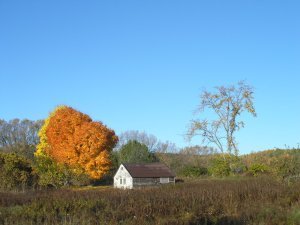 grouping."
grouping."
And what is the source of that pleasure? We lean against an old fence and feel the pure pleasure linking us together in silent homage to the divine Artist whose skill no mere human can duplicate.
It's a time of year when I don't dare have much film for my camera. Each day seems special, each vista unique, each tree a Byzantine mosaic. Along with sunsets and moonlight, Mary Helen has urged me to curtail my love affair with autumn lest overflowing scrapbooks of prints deplete our bank account and stuff our cupboards. But like rainbows and sunsets, moonbeams and snow scenes words fail us when we try to describe the subtlety and drama of autumn. Words certainly failed those bards and scribes who attributed all this to "Jack Frost" or "Mother Nature".
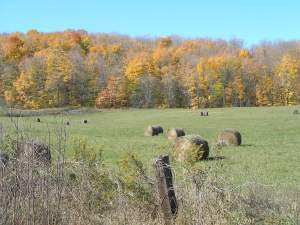 Not much better are those who confidently demythologize creation with their "scientific explanation" for autumn's palette. They remind us that each leaf is a tiny food factory in which green chlorophyll acts as a catalyst helping to promote the chemical reactions necessary to transform carbon dioxide and water under sunlight into glucose while releasing oxygen as a byproduct. All plants contain pigments that are hidden by the intense green of spring and summer growth. As the days shorten and the nights grow cooler green chlorophyll gradually disappears.
Not much better are those who confidently demythologize creation with their "scientific explanation" for autumn's palette. They remind us that each leaf is a tiny food factory in which green chlorophyll acts as a catalyst helping to promote the chemical reactions necessary to transform carbon dioxide and water under sunlight into glucose while releasing oxygen as a byproduct. All plants contain pigments that are hidden by the intense green of spring and summer growth. As the days shorten and the nights grow cooler green chlorophyll gradually disappears.
With the chlorophyll gone, the leaf can no longer make food. Sunlight reacts on leftover glucose to produce red colors. The leaf color depends on the degree of sunlight, the amount of glucose left, and the variety of other pigments that are most plentiful in the leaf. Xanthophyll is yellow. Carotene shows itself as orange-red. Anthocyanin creates a red and purple effect.
Understanding some of the reasons why the hillsides wear their colors doesn't  lessen the wonder. After all, men have been polluting the earth with their manufacturing for millennia while God's leaf factories have been quietly producing food and enriching the earth from the very beginning. And his factories don't pollute, stink, ruin the water table, sting the eyes, de-stabilize the soil, or fill the atmosphere with carbon dioxide. Leaves produce oxygen not carbon dioxide. Some researchers estimate that one tree purifies as much as 40 tons of pollutants in its lifetime!
lessen the wonder. After all, men have been polluting the earth with their manufacturing for millennia while God's leaf factories have been quietly producing food and enriching the earth from the very beginning. And his factories don't pollute, stink, ruin the water table, sting the eyes, de-stabilize the soil, or fill the atmosphere with carbon dioxide. Leaves produce oxygen not carbon dioxide. Some researchers estimate that one tree purifies as much as 40 tons of pollutants in its lifetime!
What a Creator! Not only a Manufacturer without peer and the Perfect Engineering Environmentalist but an Artist whose skill leaves us searching in vain for words to describe the scenes he paints with such prodigal strokes of his brush.
"Have you seen God in His splendors,
heard the text that nature renders?"
Sometimes it is enough just to gaze around in awestruck worship. A northern Autumn is one of those times.








October 5, 2011
The Mysterious Ocean and Human Conceit
 A few weeks ago while visiting the coast of Maine, we watched two scuba divers get ready for a dive. They carefully checked each piece of equipment and every seam in their rubber suits before easing themselves beneath the waves. What wonders would they encounter, unknown to landlubbers like ourselves? From where we stood the ocean extends mysterious and deep to the farthest horizon—an unknown universe beneath the waves.
A few weeks ago while visiting the coast of Maine, we watched two scuba divers get ready for a dive. They carefully checked each piece of equipment and every seam in their rubber suits before easing themselves beneath the waves. What wonders would they encounter, unknown to landlubbers like ourselves? From where we stood the ocean extends mysterious and deep to the farthest horizon—an unknown universe beneath the waves.
From time immemorial human curiosity has inspired expeditions to plunge beneath the ocean surface, to search the impenetrable jungle, to climb the highest peak, to explore space. And yet with each discovery, the universe's enigma's multiply. What marvels await us in the deepest troughs of the ocean? What spectacles may be encountered on distant planets? Each new discovery serves but to unveil a myriad more imponderables.
Why then do we demand absolute knowledge of God, the creator of all that exists? Why do we expect to understand everything about how God operates? Such conceit! Job, through his mysterious sufferings and undeserved trials learned to become more humble. God spoke to Job. "Who is this that darkens my counsel with words without knowledge?…Where were you when I laid the earth's foundation?…Have you journeyed to the springs of the sea?…Can you bind the beautiful Pleiades? …Can you bring forth the constellations in their season?" (Job 38:2,4,16,31,32).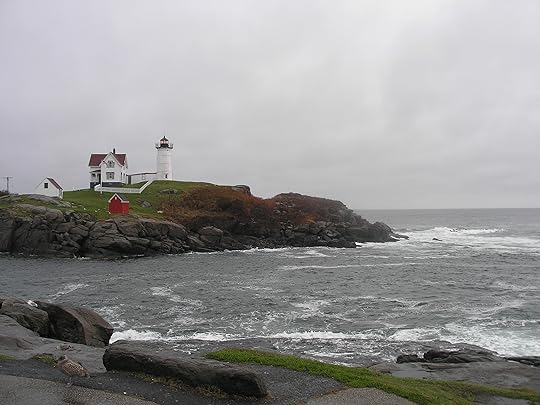
Job replied, "Surely I spoke of things I did not understand, things too wonderful for me to know…therefore I despise myself and repent in dust and ashes" (Job 42:3,6).
Wise men and women throughout the ages have acknowledged humbly the inscrutable wisdom of God. Moses wrote, "The secret things belong to the Lord our God, but the things revealed belong to us and to our children forever, that we may follow all the words of this law" (Deut. 29:29). What we need to know and do is clearly laid out for us in the Word of God. There's no mystery there.
But because of the very nature of God, our understanding will always be limited. "For my thoughts are not your thoughts, neither are your ways my way, declares the Lord. As the heavens are higher than the earth, so are my ways higher than your ways and my thoughts than your thoughts" (Isaiah 55:8,9).
Let's celebrate the mystery that is our God! "The Lord is the great God…In his hands are the depths of the earth…The sea is his, for he made it…Come let us bow down in worship, let us kneel before the Lord our Maker" (Psalm 95:3-6).©











